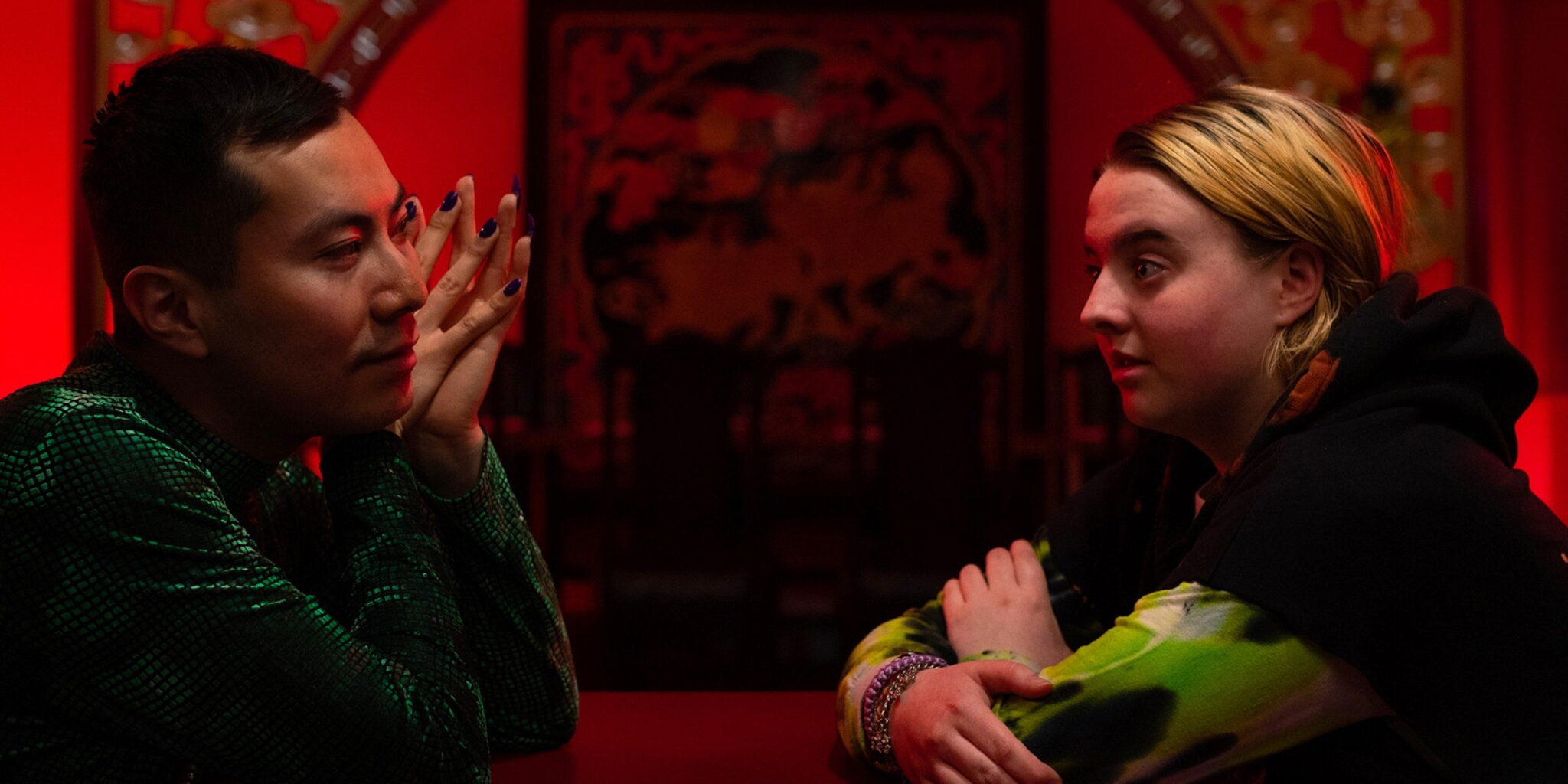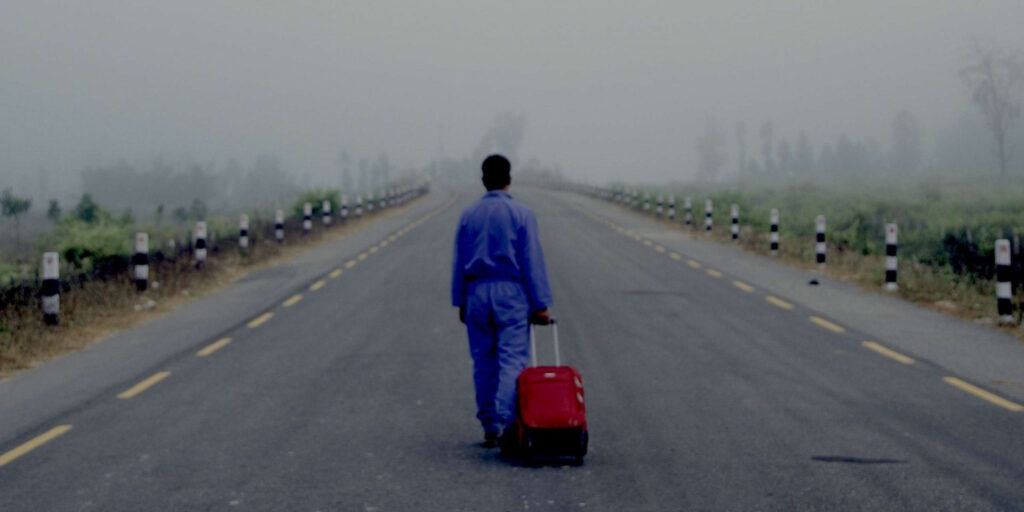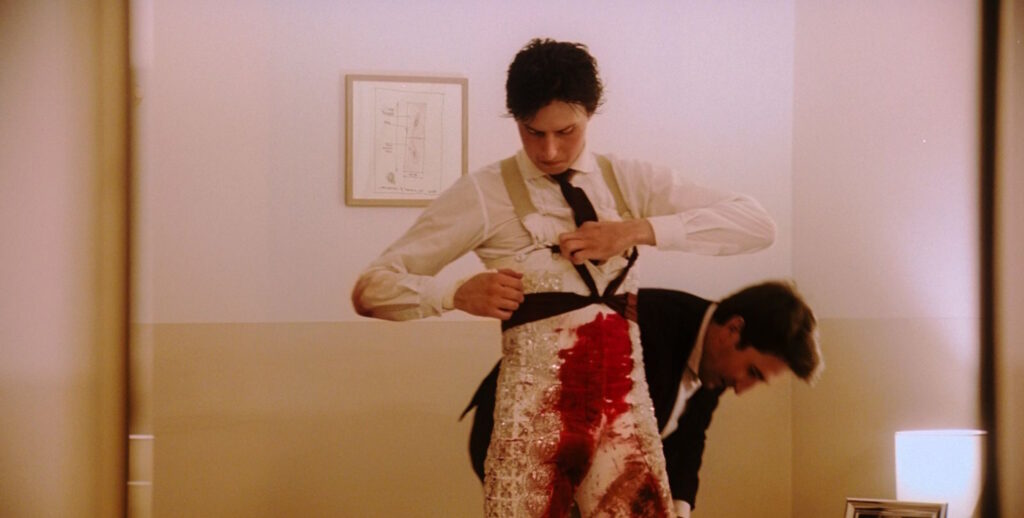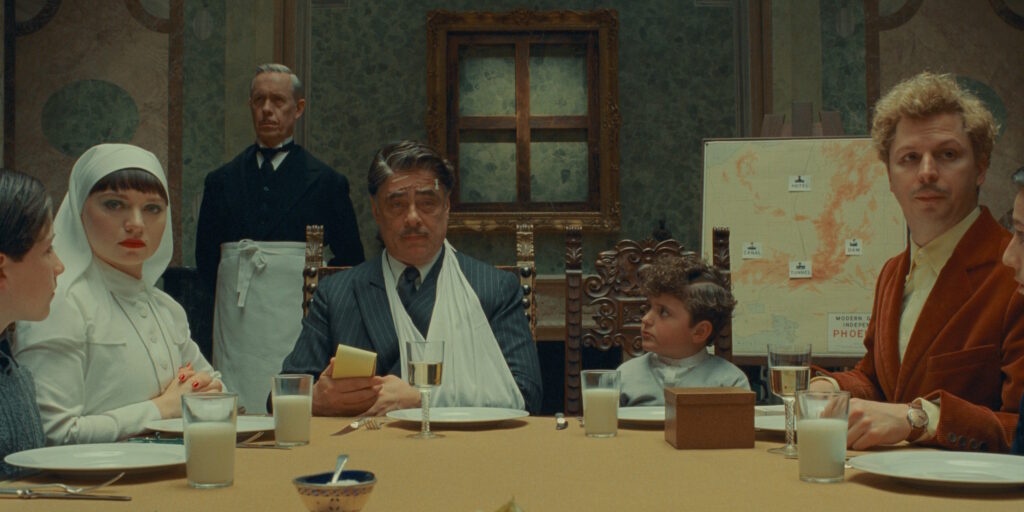[Originally published at Cinema St. Louis’ The Lens.]
The 60th New York Film Festival returned to theaters on Sept. 30 and continues through Oct. 16. Its Main Slate has received plenty of attention for featuring new films from Noah Baumbach, Kelly Reichardt, Park Chan-wook, and Claire Denis, but its Currents selections are just as deserving of the spotlight. Composed of smaller, more experimental works from new filmmakers around the globe, NYFF’s Currents runs through Oct. 14.
From hospital rooms to the Spanish countryside, from the Sudanese desert to the city of Madrid, three features showcased in Currents — Queens of the Qing Dynasty, The Dam, and You Have to Come and See It — deal with overarching themes of identity and purpose in relation to one’s physical surroundings.
Queens of the Qing Dynasty
Physically, Star (Sarah Walker) might be confined to a hospital bed, but her mind is elsewhere. Wide-eyed, staring off at some unknown point in the room, she sits as doctors, nurses, and technicians spew meaningless jargon. It goes in one ear and out the other. Star knows she needs to drink the murky, gray liquid in her hand, but she simply doesn’t want to. It is intended to absorb the poison she drank earlier, another attempted suicide in a presumed string of such incidents.
Somewhere else in the labyrinth of the hospital’s hallways and rooms, An (Ziyin Zheng) — a volunteer hoping to earn citizenship after an exorbitant number of community-service hours — serenades a supervisor. Star and An are in totally separate places within the healthcare hierarchy as patient and caregiver, but they share one thing in common: an idiosyncratic view on life that sets them apart from the pack.
Speaking of lone wolves: writer-director Ashley McKenzie based Queens of the Qing Dynasty, her sophomore feature, on two real-life friends she met while filming her debut, Werewolf (2016). There’s little doubt this inspiration plays a huge part in the film’s overall feel, which one can only call social surrealism.
Star and An form an immediate kinship, even though there’s seemingly more dividing than uniting them. One is a neurodivergent teen from small-town Canada, the other is a genderqueer immigrant just trying to avert deportation. And yet the two can’t help but be drawn to each other. It’s about more than gender or identity. Theirs is a connection more meaningful, more life-affirming than anything either has experienced before. “Thank you for being my evil accomplice,” Star texts An one evening after they’ve left her hospital room for the night, a term of endearment that only these two could ever consider endearing.
At just over two hours, Queens of the Qing Dynasty is split evenly down the middle: Its first half takes place in a series of medical facilities, while its second follows Star and An as they both attempt to make it on their own. Its languid pacing makes two hours feel like twice that, but it doesn’t matter. The film’s uniquely dreamlike feel (made all the more visceral by its abstract score) has the power to carry viewers forward, even when it feels like scenes are spinning their wheels.
Like the chaotic, crudely drawn cartoons seen playing in the background throughout, audiences will either tap into its distinctive style and characters or find themselves put off by it completely. Not everyone will have an easy time tuning into the film’s particular wavelength, but perhaps it’s meant to be that way. After all, Queens of the Qing Dynasty is not about two popular people united by their shared status as social climbers. Star and An are outcasts, ostracized on a daily basis merely for existing. This film is for them.
The Dam
Sudan, 2019. Protestors take to the streets daily and nightly, pleading for an end to President Omar al-Bashir’s 30-year reign as head of state. Elsewhere, in northern Sudan — near the Merowe Dam, along the Nile River — Maher (Maher El Kahir) makes bricks. The massive hydroelectric plant in the distance, the lone power line that cuts through the barren landscape, the faint sounds of a tiny television inside one man’s bungalow, and the cell phone in his hand are the only things that root Maher in the present. If he’s aware of the political upheaval going on, he’s not even remotely concerned. There are bricks to be made no matter who’s in office.
One man tills the wet dirt. Another scoops up a handful and smooths it in a mold. The next takes the bricks away to the kiln. From there, they’re placed in rows alongside hundreds of others. A different man turns them periodically for even drying. Every couple of weeks, the boss comes along with some cash. The days bleed together. It’s all done by hand. Director Ali Cherri — The Dam being his feature debut — must know how mesmerizing it is to watch. The camera unobtrusively observes every step of the process like a Frederick Wiseman documentary. (There’s even that Wisemanesque humor, where clever cuts in methodical action and odd interactions captured from afar elicit well-earned chuckles.)
The instant that blood clouds the water, The Dam becomes a very different film, although this change somehow feels inevitable. Maher is hurt, and though he hides it well, it’s impossible not to see his pain once it becomes known. There’s a festering burn wound on his back. Although its origins are not explained, there’s no question how it got there. Making bricks is no easy line of work. (Not to mention the mystical, foreboding mud monster squelching Maher’s name in his dreams … and maybe in his waking life, too.)
Co-written by Cherri in collaboration with Geoffroy Grison and Bertrand Bonello — whose latest, Coma (2022), also premieres at this year’s NYFF — The Dam has a poetic magical realism that cannot be effectively conveyed by words alone. (Even the film itself forgoes dialogue for much of its runtime.) It recalls the very best parts of films such as The Juniper Tree (1990) and the works of Abbas Kiarostami and Apichatpong Weerasethakul, but it is by no means derivative. Cherri’s quiet directorial debut says more about labor, spirituality, and life in Sudan than any dialogue-laden script ever could. In the end, it’s more impactful for it.
You Have to Come and See It
In their first public gathering since the onset of the Covid-19 pandemic, two couples — city dwellers Elena (Itsaso Arana) and Daniel (Vito Sanz) and country-bound Susana (Irene Escolar) and Guillermo (Francesco Carril) — take in the serene twinkling of the piano at a wine bar in Madrid, Spain. Nobody has to say anything. It’s nice just being in one another’s presence again after so many months apart.
There’s more that has come between them than just the virus, however: Elena and Daniel still live in their apartment in the Spanish capital, while Susana and Guillermo have moved to the rural countryside. What’s more, the latter couple is pregnant with their first baby. It’s the kind of life-altering divide that has split many friends and loved ones since 2020: Try to return to the way life was before, or take the fallout of the coronavirus as an opportunity to pursue a way of life once considered improbable?
“You have to come and see it,” Guillermo tells Elena and Daniel as their evening comes to a close. They’re clearly reluctant, but — at some point, jumping forward an unknown amount of time — they eventually take them up on the offer to spend a day in the country with old friends. Writer-director Jonás Trueba (whose past works have been a favorite of the San Sebastián International Film Festival and Cahiers du Cinéma alike) uses this loose plotting as a way to explore how things have changed for some and remained the same for others in the wake of life-changing global event.
It’s a bare-bones setup, structurally speaking. Plot-wise, the film could be summed up in a single line: Over two get-togethers, two couples discuss life in rural and urban Spain. Thematically, though, You Have to Come and See It is more than its straightforward premise. Through the intellectual conversations between these four friends, Trueba’s film serves as one of the first major works to grapple with the impossibly weighty question of where the world is supposed to go from here. It might not have the answers, of course, but at this point in time, simply asking is enough.
Although one could easily label You Have to Come and See It as one of many arthouse films about the quarter-life crisis faced by young artists struggling to decide whether to chase their dreams or give them up for something more practical, this niche indie subgenre has a certain added heft to it when viewed in the specific context of Covid. It still suffers from many of the issues found in other conversational, scholarly films of this sort — so-called comedy that isn’t really all that funny, debates over trademark First World problems that ultimately bear little significance in the grand scheme — but at barely more than an hour long, it’s much easier to look past the flaws.




